No matter what the device, a UHD unit will cost 3 to 5 times more than an HD unit. And that will, undoubtedly, pull you into the great UHD vs. HD debate. Of course, you are bound to wonder what is UHD display and if spending so much more for it will actually be a worthwhile investment.
Let's put it this way- The quality of the content is all that matters to some people while for others how the content is presented makes a profound impact on just how much they enjoy it. And, this difference is what keeps fueling the UHD vs. HD debate. So, continue reading to know what these terms mean and how they impact your viewing experience.
What is HD?
It's the second oldest video display technology, the one that came right after SD or Standard Definition. In the world of television screens, the term HD or High Definition ushered in an era of never before seen picture clarity and crispness along with eye catching color accuracy, saturation, and of course brightness.
The birth of the term: When it was coined in 1936, the term High Definition was restricted to TV screens and as such referred to a video display technology (405-line television system) and not the resolution of the unit.
From tech to pixels: The exemplary performance of these units was owed to their high resolution. So in time, the term HD became synonymous with the pixel numbers that it brought to the display, particularly when manufacturers started using it in connection with video players and projectors.
The introduction of HDTV: Televisions capable of delivering HD performance were developed between 1980 and 1990s. Significant developments were made that enabled the technology to see the light of day only after the introduction of the DCT video compression algorithm in 1988 and compressed video in the 1970s.
At the top of its game: And once the first HDTV was brought into the market there was simply no looking back for the technology nor for devices that promised to offer close to the 2,000-pixel performance of High Definition.
As it stands today: More specifically in terms of projection units of today, HD stands for a device capable of delivering 1,280 pixels (horizontal) × 720 pixels (vertical). The resolution is basically the total pixel count or the product of the vertical and horizontal pixels.

Since the introduction of UHD in the 2000s, the popularity of HD has been in a tailspin. The price drop in UHD devices further added momentum to the downward spiral. But, even today a lot of content on cable and even some streaming networks is created in HD. In fact, a lot of popular streaming services charge extra for an upgrade to UHD/4K.
What is UHD Display?
The birth of UHD: The world got its first glimpse of UHD technology in 2001 but it wasn't until 2003 that the first UHD device was served in the consumer marketplace. UHD stands for Ultra High Definition. In terms of pixel count, you are looking at a mammoth increase of almost 4 times over what HD offers.
Pixels and more pixels: A typical UHD projector offers a total pixel count of 8.3 megapixels delivered by 3840 pixels (horizontal) X 2160 pixels (vertical). Also known as 2160p, UHD is a significant step up in terms of picture clarity, crispness and color saturation, and accuracy as compared to HD.
Exceptional picture quality: Both standards fare very well as compared to Standard Definition or the SD quality of old CRT TVs. But, UHD truly takes things to the peak with unparalleled performance. In fact, the ability of UHD to offer crystal clear images is so astounding that any screen size below 40 inches would simply not do justice to its capabilities.
The tech that took projectors to homes the world over: This is one of the reasons why you won't find a TV below 40 inches that offers UHD or 4K. In fact, it is the exceptional performance of UHD when used for large screens that led to the popularity of home theater projectors.
The feel of a movie theater: With a 4K UHD projector, residential users can now get cinema-grade picture quality with a home theater projector. In fact, even regular TV shows served up by a UHD projector offer a viewing experience that largely parallels and sometimes even supersedes the experience of watching the very same content on a big-screen LCD or LED TV.
The great shift from HD to UHD: While FHD remains a popular display technology in projectors, most content makers and even device manufacturers have firmly jumped on the UHD and 4K bandwagon. After all, it is hard to ignore the sheer immersiveness of UHD content.

Things as they stand right now: Although HD seems to have run its course, which came to an end with the introduction of FHD, UHD is just starting out. And although 4K is the latest display obsession, the manufacturing world is already in the race to bring 8K to the consumer market.
Of course, this does not mean that HD content will simply vanish. It will take a few years before all content is offered in UHD but till then opting for a device that is capable of delivering 2160p performance is the best way to get unmatched picture quality that is almost as good as actually being present at the location.
3 Interesting Facts About UHD and HD
1. The term high definition or HD was used way back in the 1930s and it meant something different then: The term came into existence in 1936 at which point it was simply used to define a generation of televisions that had a higher resolution than their predecessors that offered a resolution of a mere 30 lines.
The introduction of high definition meant that the resolution jumped to 220 lines and higher, which was a significant step up from what was available till the end of 1935. But, it took till 1979 for HDTVs to come close to what we understand as the HD resolution of today.
2. The umbrella term UHD is used for several resolutions of which 4K is just one: Ultra high definition starts at 2160p or what is commonly called 4k or 4K UHD. This is different from cinema grade 4k, which has the same vertical pixels but higher horizontal pixels.
Currently, the still in the research phase, 8K resolution, is termed as UHDTV-2 or 8K UHD. As compared to the 8.3-megapixel performance of 4K UHD, this gets you 33.18 megapixels, so 4 times the total pixels of UHD and 16 times the pixels offered by Full HD (FHD and not HD) or 1080p. As you may have guessed, at this time, 8K is restricted to cinema halls.
3. Content platforms are still happy with the HD format: Of course, there are many streaming services that offer UHD content. Plus, many channels use this format for certain programs. But not every content platform offers UHD content.
Those that do typically charge a bit extra for it because they take the trouble of repurposing most of their content into at least FHD format in order for it to be suitable for UHD viewing. Amazon Prime is one of the streaming networks that offers UHD content.
Side-by-Side Comparison: UHD vs. HD
Resolution
As stated above, HD cannot hold a candle to UHD resolution. While you get less than 1 megapixel with an HD device, you get a massive 8.3 megapixels with a UHD device. There simply is no comparison.
And here is the thing to understand-The pixel count is more than just a figure used to sell products. While it won't make a discernible difference if the display/projection screen is about 20-40 inches in size, once you go over that upper limit, the difference is profound and immediately discernible.
As the screen size increases so does the image size and HD simply does not have enough pixels to accommodate this increase. Think of it like this- you have just a drop of ink and you have to cover a small square with it and then you have to take another drop of ink and cover the entire page with it.
When you color the small square, the ink will produce a dense shade and offer ample clarity. But, when you have to color the whole page with that one drop of ink, the effect is hosed down, the color is lighter and washed out and the details appear fuzzy. The same principle applies to an HD device.
On the other hand, if you were to paint the very same page of paper with an entire bottle of ink at your disposal, the results would be better than what you got with the drop of ink used in the small square. That's UHD for you. There are more pixels to go around than what's needed.
In other words, more colors, deeper colors, greater accuracy, and of course noticeable uptick in clarity and crispness.
Visual Quality

The analogy above involved ink of a single color. But, with a UHD projector, the device has the hall pass to use whichever color is required in whatever quantity its needed in. This impacts two crucial factors that have a bearing not just on the visual quality of the display but also on your viewing experience- Contrast and color reproduction.
Unlimited access to color means that all shades are represented as close to life as possible. The finer nuances of the impact of shade and light are also picked up with profound accuracy.
Moreover, the contrast between the darker hues and the lighter shades is depicted with greater accuracy. In fact, the color black is depicted at its darkest and deepest while white is at its brightest. Greater contrast means that the picture quality is crisper with exemplary detailing.
As far as HD displays go, the picture quality is far superior to that of SD but it simply isn't as good enough as the image quality of UHD displays. The colors will be seen, but you may not get the same level of saturation. The contrast ratio will similarly be lower, which means details that involve shading may get lost or be represented in a single tone.
Price
It goes without saying that the epic improvement in picture quality comes at a price. This is how it goes- Since you are getting a 4-time improvement in image crispness, clarity, and overall quality, you'd need to pay at least 4 times as much for that performance.
Usually, a UHD unit, be it a TV or projector will cost between 3-5 times more than an HD unit. Added features and any increase in size will simply increase the cost further.
READ MORE: 4k vs. 1080p Projector Comparison: Is A 4K Projector Better Than 1080p?
Is UHD Better Than HD?
Undoubtedly! Particularly for a projector, you would want to go with UHD resolution simply because the screen size is almost always more than 80 inches and can even go up to 150 inches. What's more, the seating may be within 10 feet of the screen, which means pixelation will be an issue if you have a lower resolution.
Along the same lines, if you need to zoom in, the increase in size will lead to blurring if you have an HD unit. In contrast, the image will continue to retain its integrity even when you increase the size with a UHD projector.
Should I buy a UHD projector and screen combo?

Here is an analogy to explain this clearly- If you were crafting a ring and have chosen the best quality diamonds for it, of course, you would not want to get them affixed in copper or even silver. You'd probably go with gold or platinum. Not just because these metals cost more but because they are capable of creating a synergy with the innate traits of the gemstone to bring out its true brilliance.
That's exactly what a screen does for a UHD projector. Will a high-end 4K UHD projection unit work with a white wall? Of course, it will! But will you get that mesmerizing performance? Absolutely not!
For those rich colors to be depicted as they are meant to be, you will need a screen that allows you to harness the complete pixel potential of your UHD projector. So, you won't need just any odd screen but a product that is specifically designed for UHD projection. And a combo of a UHD projector and screen will get you just that!
READ MORE: Mastering the WEMAX Nova UST 4K Laser Projector Setup
UHD Projector recommendation: WEMAX Nova
The WEMAX Nova is one of the top selling 4K UHD projectors in the market and for good reason. The "UH" when used in reference to the WEMAX Nova stands not just for Ultra High Definition but also for Ultra High Performance and Ultra High affordability.
4K Ultra HD: The crystal clear display and crisper-than-ever images are attributed to its massive 4K HD resolution coupled with a contrast ratio of 3000:1 and brightness of 2100 ANSI lumens. In terms of picture quality, it's the same as watching a movie in a cinema hall. The experience is just as much of a feast for the visual senses even when the content is just an episode of your favorite TV/streaming show.
Ultra Short Throw Ratio: The WEMAX Nova is capable of projecting a massive screen size of 150 inches, which means that you could place the seating more than 10 feet away from the screen and it would still feel as if you are right in the middle of the action.
Endless Fun with Android TV: The Nova is a future-ready projector so it comes with Android TV 9.0 and 5k built-in apps. That's everything from Netflix shows to e-learning and from cooking videos to Zoom meetings delivered to your living room.
Wrapping It Up
While HD content is still being relayed by cable and streaming networks, when you consider the mad dash to get to 8K, it won't be long before content makers shift away from this old resolution standard and move completely to 4K UHD.
After all, it is in their best interest to make their videos and content as visually appealing as possible and the UHD format does just that. In fact, with a screen size of 100 inches, it is hard to not notice the difference between UHD vs. HD picture quality.
So, if you want to upgrade to a new projector or even if this is you are a first-time projector buyer, it makes sense to spend more for a technology that is already here and pegged to rule the world of digital entertainment for the next couple of years.
Related Blogs from WEMAX
Beginner's Handbook of Projector Terminology
Why Brightness or Lumens Matters to Projectors
Where to Put Your Projector? Bedroom vs. Living Room
Be the first to know the latest updates, tips, how-tos, exclusive deals, and discounts from WEMAX. Sign up for our newsletter today!


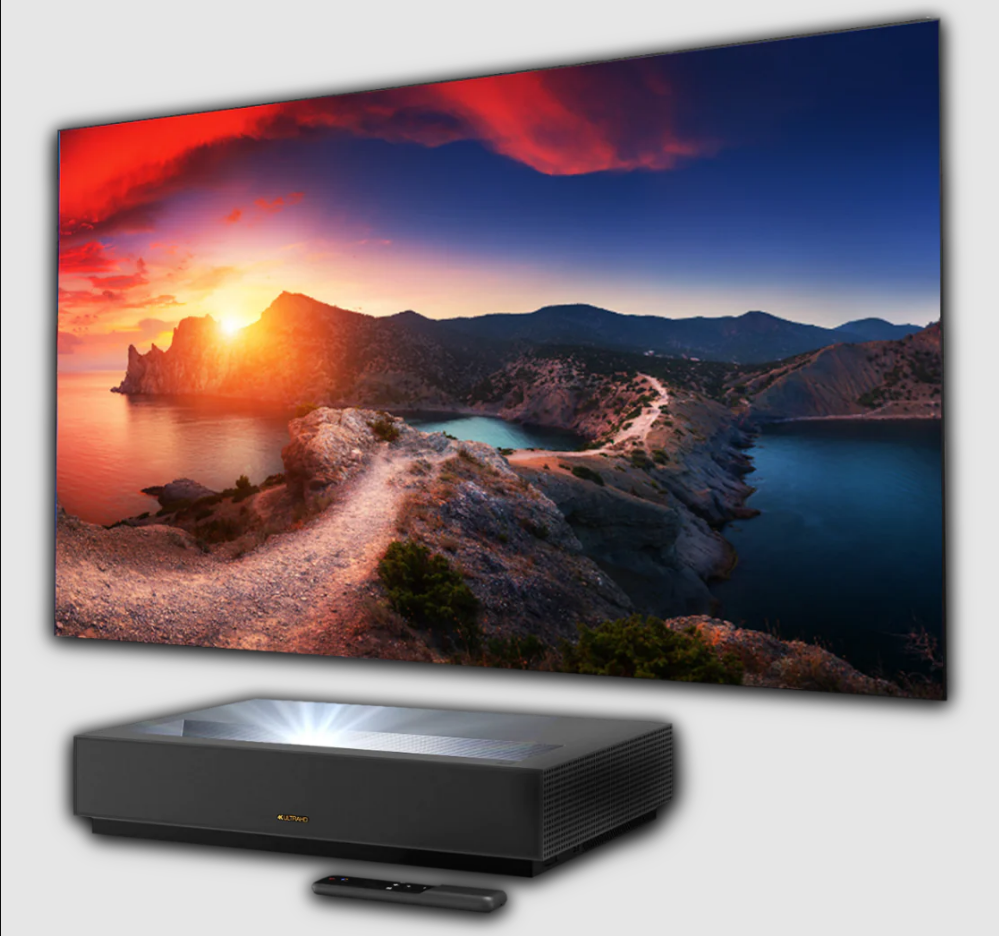
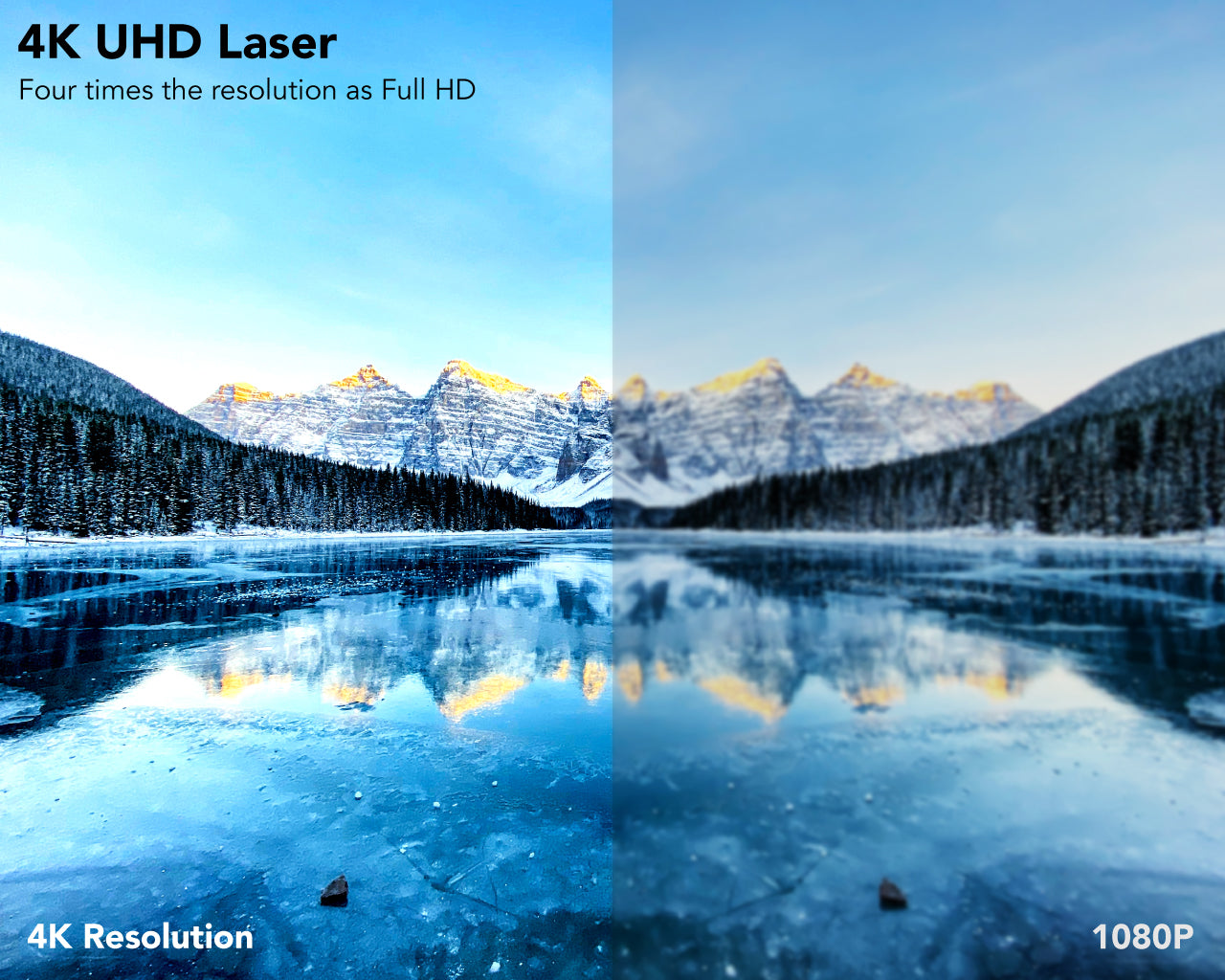
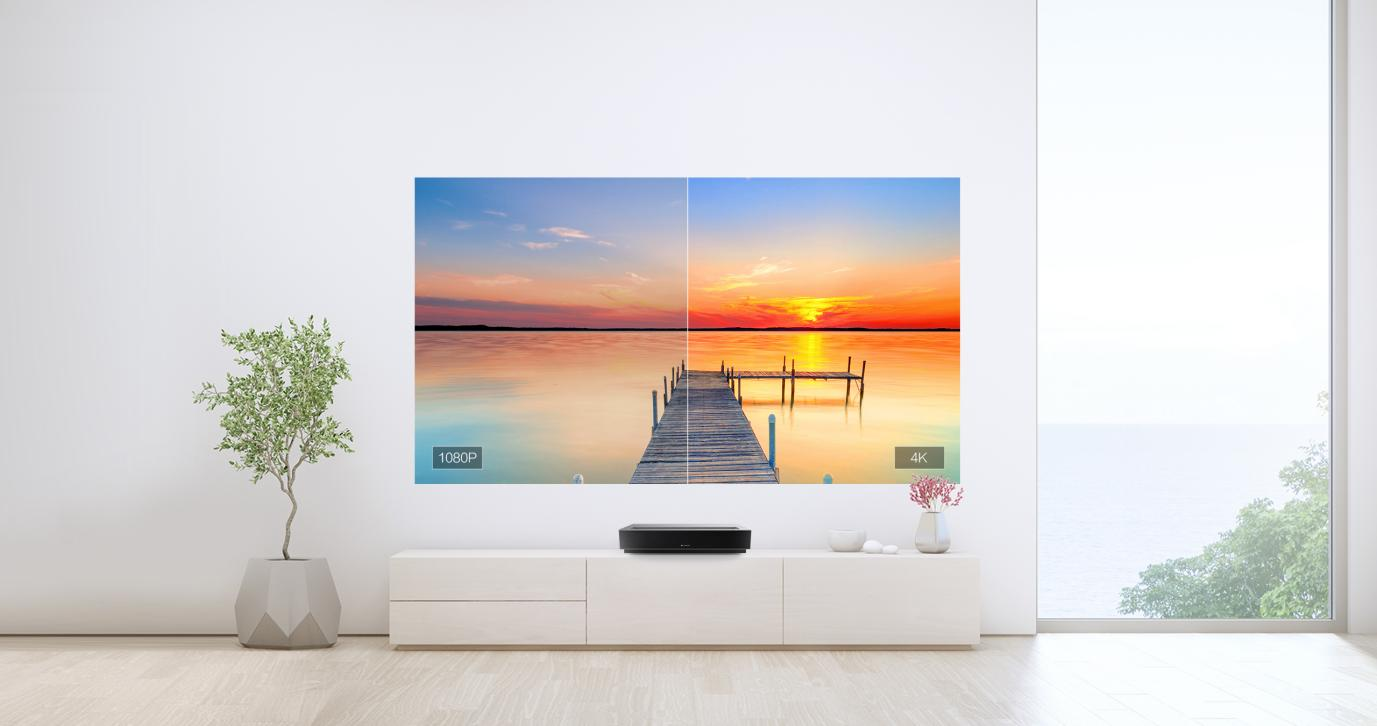
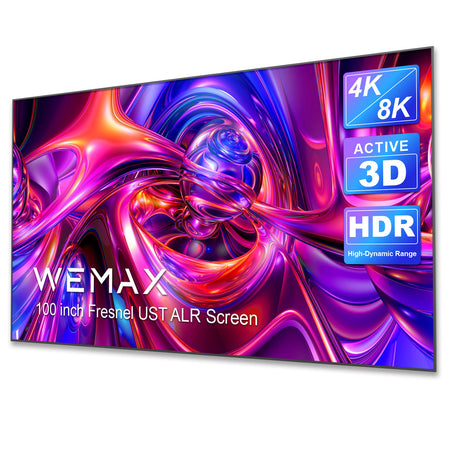
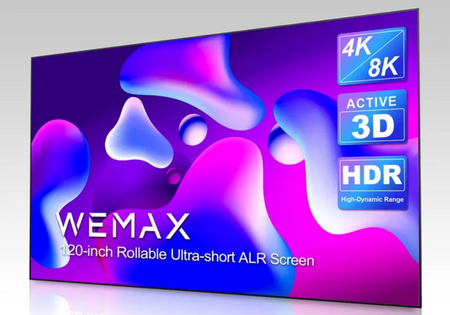
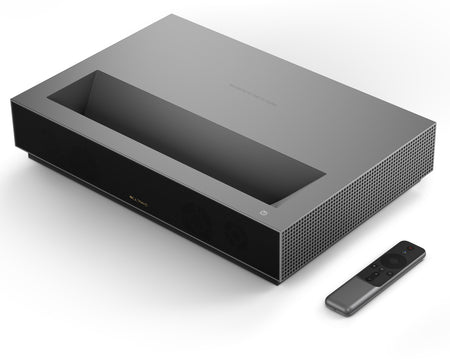
Comments (0)
Back to Tips and Tricks